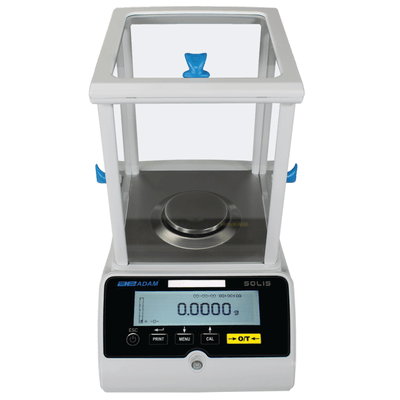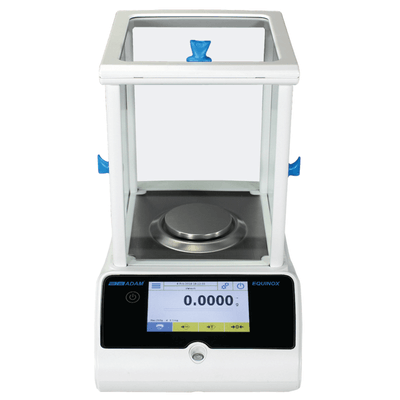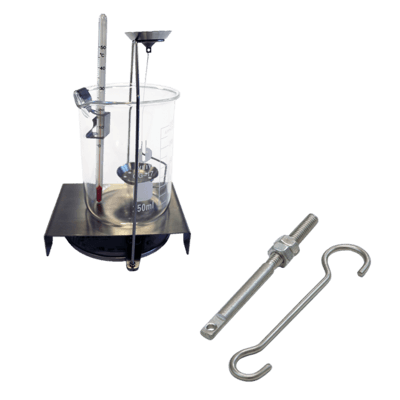
Analytical balances are highly sensitive lab instruments designed to accurately measure mass. Their readability has a range between 0.1mg - 0.01mg. Analytical balances have a draft shield or weighing chamber to prevent the very small samples from being affected by air currents. They're meant to detect very fine increments, so the slightest vibrations or breeze can impact the results. As such, analytical balances should be used in a dedicated room with as few disturbances as possible. Analytical balances need to be monitored carefully and calibrated frequently. Most analytical balances have both automatic internal motorized calibration and calibration with external weights. You can get calibration weight sets here.

What makes analytical balances different from other balances?
Analytical balances are designed for very precise measurements of very small samples. Precision balances usually have a higher capacity than analytical balances do and typically deliver results of 0.1g, 0.01g or 1mg. Analytical balances have finer readability, are much more sensitive to changes, and can detect smaller variations in mass. Precision balances have more variety in body style and options, but they do not offer readabilities greater than three decimal places. For acute measurements in labs, analytical balances are the right choice.
Unlike top-loading balances, analytical balances like the Solis, the Luna or the Equinox usually have a weighing chamber that encloses the weighing pan with glass doors to prevent interference from vibration or air currents. The weighing pan is usually smaller than in precision balances, and can only accommodate small samples.
Common features found on an analytical balance
Analytical balances usually come with many features and functions. Most of them have counting and check counting applications, for example. These can be useful when counting pills, ingredients or very small pieces. Dynamic weighing is also very useful, as it allows lab professionals to weigh unstable samples such as liquids, small animals, or insects. Percentage weighing allows for quicker, more efficient formulation, and is quite handy for chemistry and pharmaceutical applications. Accumulation ensures you can have large results despite the balance's small capacity; instead of having all the material on the balance at one time, you can accumulate the results of doses or packaging to receive a total without putting all the product on the balance at the same time.

GLP/ISO compliant reports are essential for laboratory work. Having the balance automatically fill relevant fields can save time and allow researchers to spend more time on their work and less time formatting. This is a feature that's especially important for use in quality control.
A bright, well-lit display with multilingual software allows the balance to be used in a variety of countries, or by multilingual staff and students.
Analytical balances can take longer than precision balances to stabilize. A level indicator and adjustable feet are important. The balance must be stable in order to produce reliable results.
Useful accessories to use with your analytical balance
Printers can be useful, as are USB interfaces to store test results. You can also pair analytical balances with software like Adam DU for further data analysis of your results. A security lock can prevent theft and make sure the balance isn't moved from the room.
Density kits are popular accessories in labs and in classrooms, as they allow the balance to make density and specific gravity measurements.
USB and RS-232 interfaces are very useful for sending data to computers and printers, which can save time and help with later in-depth analysis. Couple that with GLP/ISO compliant printouts to save even more time and efforts.
It's a good idea to keep calibration weight sets on hand to ensure you can calibrate your balance frequently. An anti-vibration table can create a dedicated workstation and calibration station, and ensure the balance is stable and has less interference to contend with during measurements for reliable results.

Already own an analytical balance? Check out our infographic on how to properly maintain your weighing instrument: https://sf-asset-manager.s3.amazonaws.com/97092/4/407.pdf
Don't hesitate to contact us if you have any questions, and follow us on social media for news, blog posts and product information. We have some product videos and tutorial on our YouTube channel as well.

